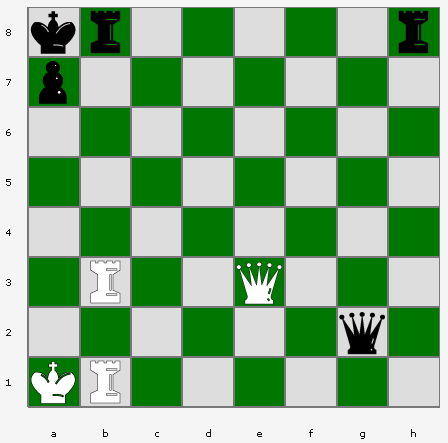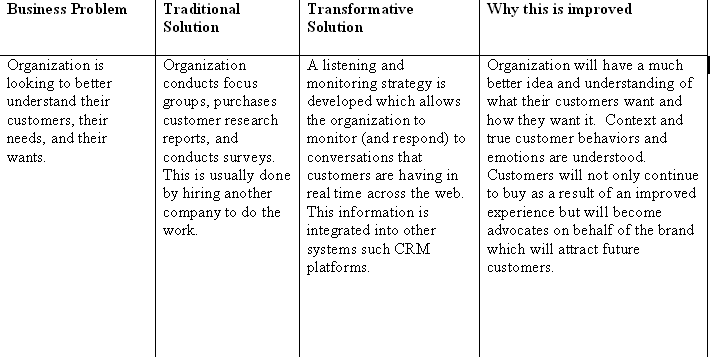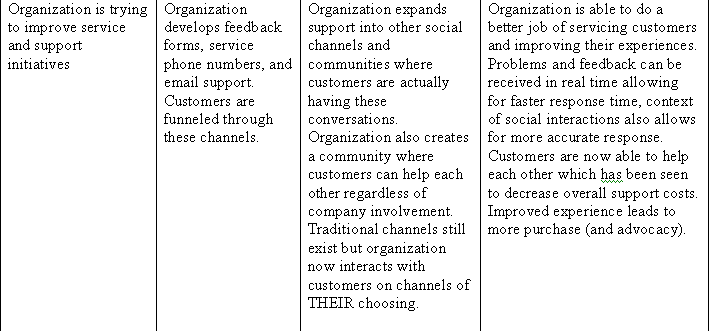 (White to move and Mate in 2, can you figure out the answer?)
(White to move and Mate in 2, can you figure out the answer?)
There’s been a lot of talk about what SCRM is (social customer relationship management) and how it should be defined. There has also been a lot of conversation around Social CRM from a technology standpoint in terms of vendor offerings. I’ll admit I’ve engaged in the definition wars as well as it’s hard to resist however I’ve come to realize that none of this matters because at the end of the day we are looking to solve a business problem that organizations are faced with. Nobody asks for a Social CRM solution and nobody has a Social CRM problem. What we are dealing with is an evolution of business.
There hasn’t been much conversation around business use cases and specific business problems that Social CRM helps solve. I thought I’d start the conversation, at least on this site.
I actually started writing far more than I should have and really scaled everything back to what I hope is an easy to understand yet comprehensive explanation of some of the business challenges that Social CRM is seeking to solve and how. I probably should have put greater emphasis on the “people” and “strategy” aspect of making this work so I’ll clarify that here. Every solution needs to be supported by an existing CRM framework, meaning people, process, and technology. I don’t want anyone to read this thinking that just deploying a monitoring tool or a community platform is going to solve anything because it won’t. Technology is always an enabler and nothing more.
I used the term “Transformative Solution” because I believe that the title of the framework for social business that Mike Fauscette and his team created at IDC is spot on, what is the title you ask? “Social Business Framework: Using People as a Platform to Enable Transformation” (personally I would have used the term “empowering” instead of “using” but you get the point, either way it’s definitely worth a read). I don’t want to comment on the actual framework yet because I need to spend more time reading through it but at first glance it made sense. Let’s get back to the point of business evolution or transformation and why this is significant. In order to understand this evolution or transformation I think it makes sense to start off with a business problem, a traditional approach to solving that problem, an evolved or transformative approach to solving that same problem, and a brief explanation of why this transformative approach is an improvement.
I really wanted to go through the 18 Social CRM use cases that Jeremiah Owyang from Altimeter created but honestly I just didn’t have the energy so I thought I would give it a go with the two examples below (just to get started).


What I put together is not perfect but I really just wanted to show how Social CRM is seeking to solve existing business challenges which organizations are faced with. Social CRM isn’t about social media and there is no magic voodoo here, it’s simply a different approach to solving a business problem that has and will always exist within most organizations around the world. In fact, I think it would be great for everyone to contribute some ideas to this. If you have a business problem your organization is looking to solve or have an idea of how Social CRM can help solve an existing (or new) business problem, then leave a comment below.
I’m sure many of you reading this can add to what I started or perhaps make changes/edits to what I have put together. I actually think this approach makes a lot of sense for vendors who are looking to sell their tools and/or products.
So what do you think? Does this make sense? Are you able to see the difference between a traditional and a transformative solution to the same business problem? I welcome any feedback to improve this as I’m hoping to incorporate more tables and similar breakdowns in future posts.
Comments